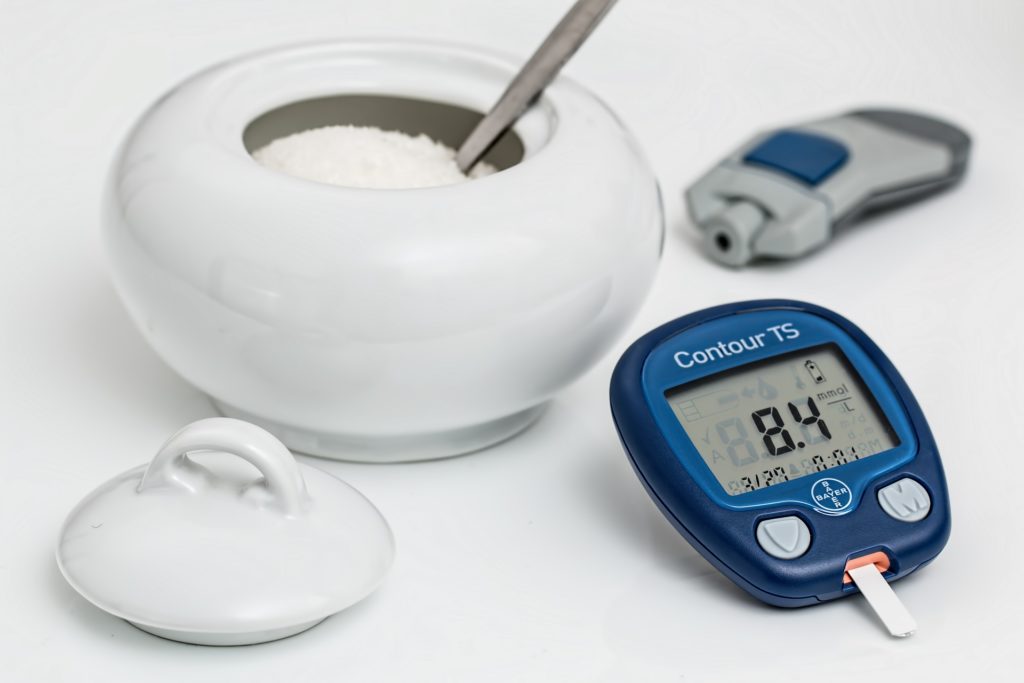Diabetes is a condition in which your body does not make enough insulin to keep your blood sugar levels steady. Insulin is a hormone that removes sugar (glucose) from your blood when your blood sugar is too high. It then puts it to work as energy for your cells. Diabetes can be a confusing topic, so here are ten facts to be aware of regarding this condition.
1. There are 3 types
Diabetes has 3 types: Type 1, Type 2 and gestational. Type 1 diabetes is an autoimmune disease in which your body doesn’t produce insulin for itself at all, because the immune system is attacking the cells in the pancreas that create insulin. People with Type 1 diabetes must take insulin every day to be able to live. Type 2 diabetes is caused when the body can’t make enough insulin for the body, and is most common in individuals over the age of 45. The final type is gestational diabetes, which occurs only in women during pregnancy, and goes away after the baby is born. However, women who have had gestational diabetes are more at risk for Type 2 diabetes after they give birth. Over 420 million people in the world have some form of diabetes.
2. The vast majority of people with diabetes have Type 2 diabetes
About 90-95 percent of people with diabetes have Type 2, while about 5 percent have Type 1, and the remainder have gestational diabetes.
3. Diabetes is a leading cause of death in the world
While diabetes—and the complications of it—is the number 7 cause of death in the United States, it has a much higher mortality rate in the rest of the world. This is especially true in middle- to low-income countries, as these countries are often unable to access proper treatment for this condition.
4. Type 1 diabetes is most common in young people
Type 1 diabetes usually develops early in life, and has been known previously as insulin-dependent or juvenile diabetes. It’s most common in African Americans and Hispanics/Latinos.
5. Type 2 diabetes is preventable
Risk factors for Type 2 diabetes include aging and being overweight or obese, though as youth obesity rates rise, so do cases of early-onset Type 2 diabetes. Staying healthy through proper diet and about 30 minutes of exercise every day or on most days can drastically decrease your chance of getting Type 2 diabetes.
6. Cases of Type 2 diabetes have doubled in America in the past 20 years
Causes for this are the high and increasing rate of obesity in America. Also, a large percentage of the American population is advancing in age.
7. Diabetes can be managed well
People with diabetes can still live well in spite of their condition. In fact, the ways that they can stay well are not much different from the ways that everyone else does. Moderate regular exercise and weight loss or control can go a long way to helping minimize the symptoms of diabetes and the complications that can result from it. Also, those who discover early on that they have diabetes have a much better chance of being able to keep it under control.
8. Diabetes meal planning doesn’t have to be complicated
The main dietary restrictions a person with diabetes should practice are avoiding excess sugar, unhealthy fats (i.e. saturated and trans fats), sodium and cholesterol. But this doesn’t have to be difficult. It is possible to eat healthy even on a tight budget. Watching your carb consumption, eating fiber-rich foods—like green vegetables and fresh fruits—and consuming lean meats and other healthy sources of protein can all help your body stay healthy while you deal with diabetes.
9. Diabetes is a main cause of blindness, amputation, kidney failure and other conditions
If diabetes is not managed well, it can get out of hand. It can lead to conditions like diabetic retinopathy, which affects your sight and can cause blindness. It can seriously harm your kidneys and can affect your oral health, as well. Uncontrolled diabetes can also lead to heart disease and stroke. It can also prevent your body from healing as quickly or being aware of the seriousness of an injury, and a slow-healing wound is more likely to become infected or become an ulcer, or open sore (particularly on the feet and legs). If the infection is not treated properly, it can become too severe and damaging. It can also spread to other parts of the body, which can cause the need for amputation.
10. Knowing your risk level can help you prepare for or avoid diabetes
Many people don’t even know they have diabetes. In fact, about a third of United States adults have prediabetes, a borderline-diabetic high blood sugar condition, but 90 percent of them don’t know it. People who smoke are also 30-40 percent more likely to develop Type 2 diabetes.
Diabetes doesn’t have to be scary, and it doesn’t have to run or ruin your life. If you have diabetes or think you could be at risk, contact us today to schedule an appointment! We care about the well-being of our community, and we’d love to help you.
